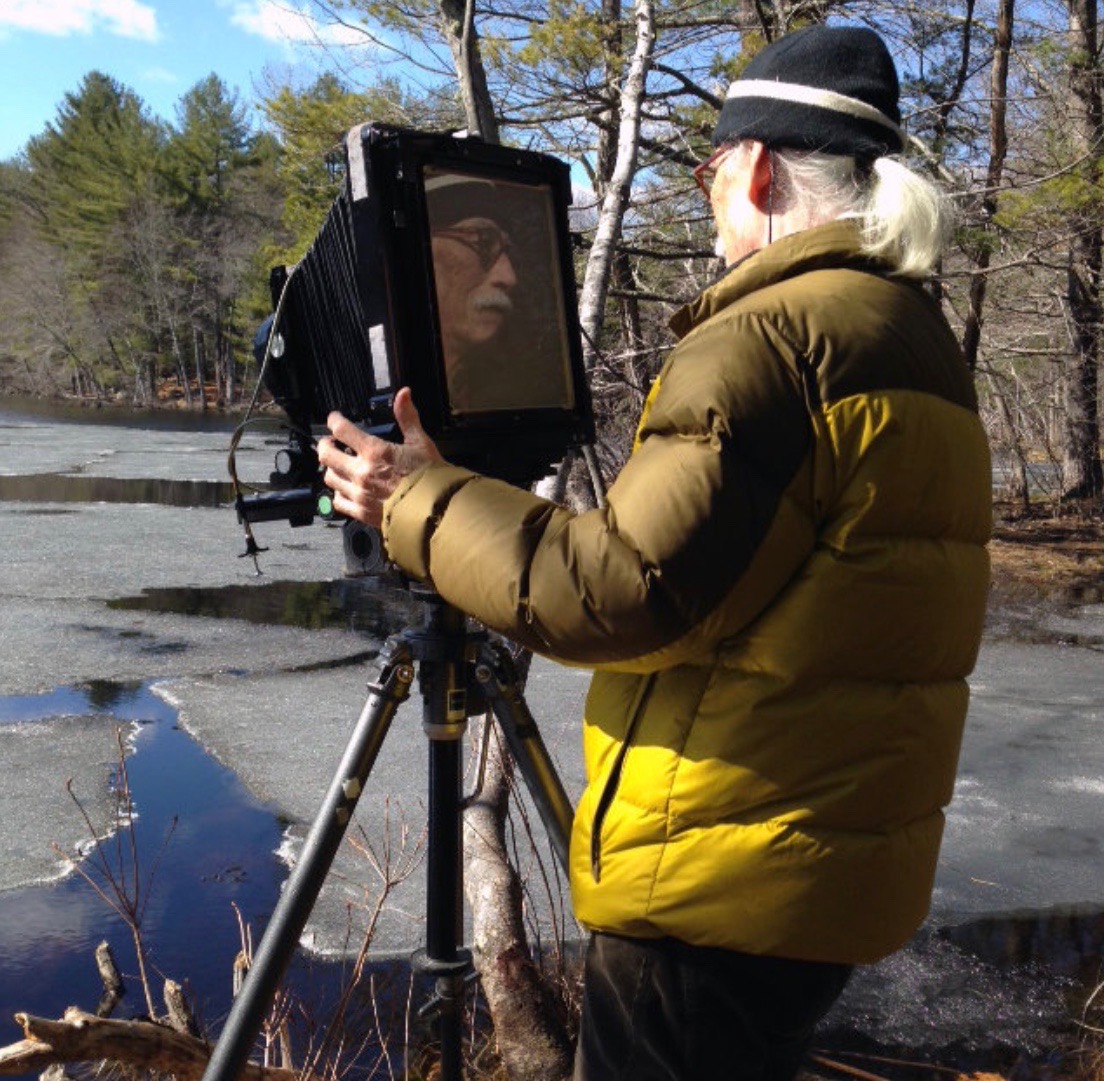
Artist Statement by Koichiro Kurita
About “Walking” 2019
“It’s the smell of the forest that I sense immediately as I walk into the woods. Each season and time has a different smell; woods in the spring time, woods in the summer, in autumn in winter….in the morning, the the evening, in the run, in the fog and on a clear day. I never analyze the cause of the smell nor attempt to explain it in words. It doesn’t mean anything to me, those intellectual or scientific explanations. The effect of those fragrances is an emotional and aesthetic experience and it is foreign to the consciousness, which can be explained in words. Loving nature doesn’t mean to view, think nor study the individual pieces, but to make contact with nature instinctively, with your emotion and for the sake of its beauty. By walking in the woods, I create freedom of the spirits through my senses”
About nature and “Chi Sui Ki” – 地水気 (1986 ~ 2006)
I had a fateful encounter with a book when I was a commercial photographer. It was Thoreau’s “Walden”.
I was moved and inspired by its insightful, independent thinking and by the absolute freedom of his spirit
unconstrained by society’s rules and his ability to enjoy harmony with nature. It was reminiscent of
Chuang-Tzu’s philosophy and very close to the Oriental way of understanding nature. — This was the start of
my photography as art.
The world of Nature embraces Terrasphere, Hydrosphere and Atmosphere, (Ground, Water and Air—Chi Sui
Ki). Each surface and their borders connect in a subtle and mysterious way. These phenomena, including all
things and all living things like us exist in time both as independent and co-dependent entities. They all share
borders with each other and with other spheres. To recognize all relationships, we understand that the
connections are not in conflict but rather in a state of order and harmony. Each connection contributes to a
harmony of Nature as a whole.
My work is the expression of these mysterious junctures and an exploration of the connections between myself
and nature. Loving nature doesn’t mean to scrutinize or analyze examples, but to make contact with nature
instinctively, with sense and emotion, for the sake of its beauty. Interestingly, the photography itself is also a
form of communication without words.
“Perceiving” (2003 ~ 2013)
The idea of “Perceiving” was inspired by my study in Japan of perceptual psychology. “How the human
being sees and perceives,” was my study within the scientific approach. Since becoming a photographer,
I wanted to photograph the connection between my mind and visual perception -“What I see and perceive”
rather than isolated artistic vision. Perceiving is for each human being a connection between time and mind.
An important point in photography to me is where to place the camera. The placement of the camera is not
merely a physical position, it is also a psychological position. In this work, I aim to create a link between
psychological comprehension and my philosophy of nature, which ties perception inextricably with object,
which then relates to my photographs. I photographed nature with multiply composed sequences using 8×10″
format camera. As a result, the final image (composed of multiple images) is a condensation. Each focused
visual area, without emphasis of perspective and distortion, is more than a single photograph that I could take
in just one exposure using super wide lens. These photographs look natural, however the images depict an
experience seen in the camera — it represents the process of “seeing photographically.”
“Medium”
For these my photographs, I chose traditional platinum / palladium printing process with archival hand made
gampi paper for a harmony of idea and form. There are three reasons to use gampi paper. The first, I have seen
Steiglitz’s photogravure using Japanese paper long time ago and I was amazed at his sensibility. The second,
the paper has been used for historical documents since 1400’s in Japan. It perfectly endures in the Japanese
museum. Lastly, as a nature photographer, I am concerned about environment. The gampi paper is used only
tree’s surface without cutting down the tree. I took on the challenge to use gampi paper for hand coating
photographs and collaborated with a paper maker. The resulting, gampi is the finest for my photographs.
